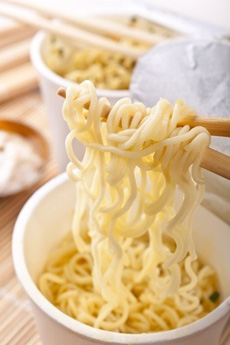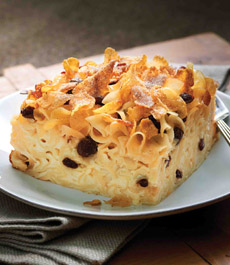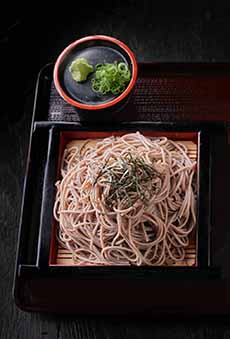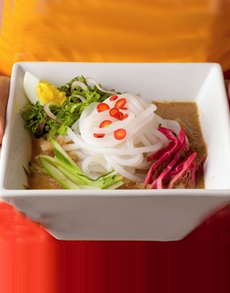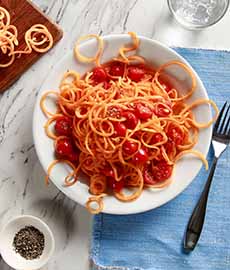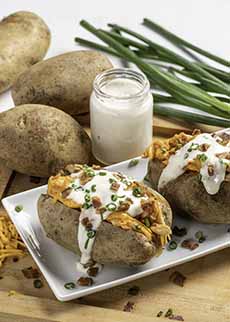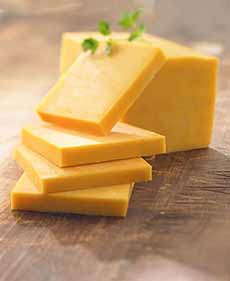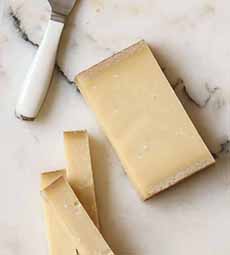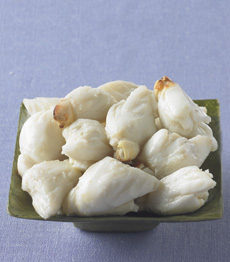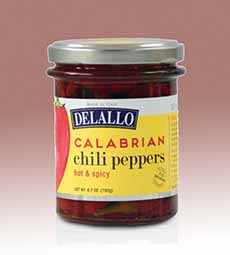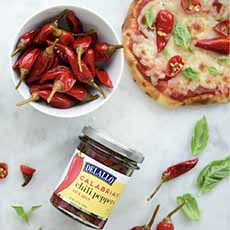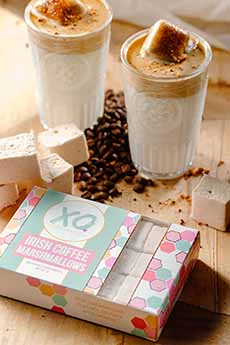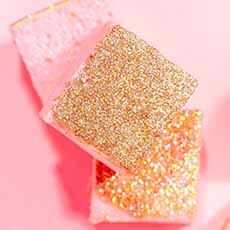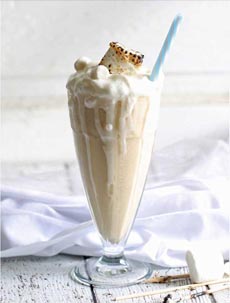|

[1] Venison meatballs. Venison, along with bison, has the lowest fat of any red meat (photos #1 and #2 © New Zealand Venison).

[2] Ground venison can be used interchangeably with ground beef: in burgers, meatballs, meatloaf, pasta sauce, and more.
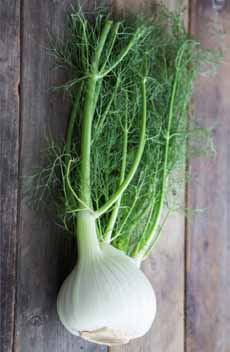
[3] Fennel is an underappreciated vegetable in the U.S. Also cut it into sticks for low-calorie snacks and crudités (photo © Good Eggs).
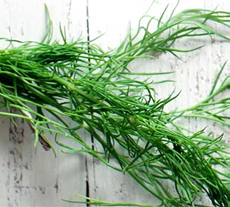
[4] Dill is a member of the same botanical family as fennel. Both are used in this recipe. Check out the differences below‡‡ (photo © McCormick).
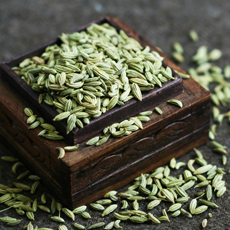
[5] Fennel seeds give delicious flavor and scent to breads, curries, stews, desserts, stews, even beverages (photo © Silk Road Spices).

[6] Currants, also called Zante currants, Corinth raisins, and Corinthian raisins, are raisins of the small, sweet, seedless grape cultivar Black Corinth (photo © Food To Live).
|
|
National Meatball Day is March 9th, but our order of ground venison for this delicious recipe didn’t arrive in time for dinner the day before. So we made it last night, and are pleased to share the yummy recipe below. It sent to us by New Zealand Venison, which raises grass-fed venison sustainably: no steroids, no hormones.
First, some venison trivia:
Venison originally meant the meat of any game animal, but now refers primarily to the meat of deer or elk (two of the edible horned ungulates*).
The term can be used to refer to any part of the animal, so long as it is edible, including the internal organs.
Along with bison, venison is the healthiest red meat. There are minimal differences between the two†.
Besides being really delicious, venison is full of nutrition. Both red meat eaters and red meat avoiders should note that venison is:
Low in fat: 80% less fat than beef.
Lower in fat, calories, and cholesterol than skinless chickenLow in saturated fatty acids.
High in protein.
High in vitamins & minerals, particularly iron, vitamin B12, and niacin.
Naturally lean, venison does not require any trimming of fat before cooking.
There are 20 more meatball recipes below.
RECIPE: VENISON MEATBALLS
These meatballs go nicely with buttered noodles, with pasta (sauced as you prefer), or on a bed of grains.
Unlike some meatball recipes, which can be fairly simple, this recipe has layers and layers of flavor.
Prep time is 15 minutes, cook time is 1 hour 15 min
Ingredients For 4-6 Servings
4 small fennel bulbs
1 pound ground/minced‡ venison
1/8 cup fresh white breadcrumbs, from about 1 slice of bread
1 small onion, peeled and finely chopped
1/4 cup parsley leaves, finely chopped
1 tablespoon dill, finely chopped
5 anchovy fillets, drained and finely chopped
1 tablespoon fennel seeds, lightly toasted and crushed
1/2 cup currants
Salt and black pepper to taste
2 tablespoons olive oil
1 cup plus 2 tablespoons white vermouth or dry white wine
6 plum tomatoes, roughly chopped
1 lemon, juiced (save juice for another recipe), peel shaved into long strips
1/4 cup pine nuts, lightly toasted
For serving: lemon wedges
Preparation
1. TRIM the fennel, discarding the stalks but reserving the fronds to garnish. Cut each bulb in half lengthways, then cut into slightly-less-than-one-inch-wide wedges.
2. PLACE the minced venison in a large bowl with the breadcrumbs, onion, parsley, dill, anchovies, fennel seeds, currants, half a teaspoon of salt, and a generous grind of black pepper. Mix to combine, then shape into about 30 golf-ball-sized balls.
3. HEAT the oil in a large sauté pan on a medium-high flame. Once hot, fry half the meatballs for five minutes, turning regularly until browned all over. Transfer to a plate with a slotted spoon, then repeat with the remaining meatballs.
4. FRY the fennel wedges in the same pan for four minutes, turning them a few times, until browned all over. Add the vermouth/white wine.
Once it’s bubbling, stir in the tomatoes, lemon peel, half a teaspoon of salt, and plenty of pepper.
Once the mix comes to a boil, lower the heat to medium-low, cover the pan and leave to simmer gently for 10 minutes, until the fennel is starting to soften.
5. RETURN the meatballs to the pan, stir them through, cover and leave to cook for 30 minutes, until the fennel is soft and the meatballs are cooked. Remove the lid, increase the heat to medium-high and cook for five more minutes, stirring constantly, until the sauce thickens.
6. REMOVE from the heat, sprinkle with the pine nuts and reserved fennel fronds, and serve with a lemon wedge.
MORE MEATBALL RECIPES
10 Ways To Flavor Meatballs & A Meatball Party: Part 1
10 Ways To Flavor Meatballs & A Meatball Party: Part 2
Breaded Veal Meatballs With Vodka Sauce
Buffalo Chicken Meatballs
Chicken Teriyaki Meatballs
Deconstructed Buffalo Wings With Chicken Meatballs
Eyeball Meatball Sandwich (for kids)
Giant Meatball
Gourmet Meatball Sub
Homemade Breadcrumbs
Homemade Spaghetti-O’s
Inside-Out Spaghetti & Meatballs
Italian Fonduta
Korean Spaghetti & Meatballs
Layered Salad With Meatballs
Meatball Pot Pie
Pork Combination Plate
Spaghetti & Meatball Sundae
Swedish Meatballs
Venison Meatballs
|
________________
*Horned refers to horns or antlers of a particular family of mammals: antelopes, buffalo, caribou, deer, cows, giraffes, oxen, reindeer, and rhinoceroses. In most species, only males have antlers, but both females and males can have horns [source].
The clade Ungulata has numerous families including non-horned ungulates: camels, hippopotamuses, horses, pigs, sheep, tapirs; and zebras. Cetaceans such as dolphins, porpoises, and whales are also ungulates. Here’s more about ungulates.
A clade is a group of organisms believed to have evolved from a common ancestor, as seen on a phylogenetic tree, according to the principles of cladistics. We belong to the great ape and human clade (Primates: Hominidae), which includes bonobos, chimpanzees, gorillas, humans, and orangutans.
†Nutritionally, there are a few distinctions between the two. In a single three-ounce serving, bison contains slightly fewer calories and protein and is also a bit lower in micronutrients like niacin, thiamine, iron, and riboflavin. Bison does, however, contain slightly more zinc, vitamin B12, and selenium than venison [source].
‡Click for the difference between ground meat and minced meat.
‡‡Dill and fennel are two herbs in the family Apiaceae, commonly known as the celery, carrot, or parsley family. The seeds of both are used as spices, and the leaves are used as herbs. Fennel plants, which have a licorice-like flavor, are entirely edible: the bulb, stalk, leaves, even the delicate yellow flowers.
CHECK OUT WHAT’S HAPPENING ON OUR HOME PAGE, THENIBBLE.COM.
|
